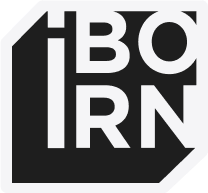Imagine a group of people who all have the same skills. Sure, they’re good at what they do. But when they hit a roadblock, they all see the same problem in the same way. No fresh ideas. No new perspectives. Just more of the same. Now picture this: a team with a developer, a designer, a product manager, and a data analyst. All are working together. Each with their own expertise, but aligned on a common goal. They approach problems differently. They ask the right questions. They come up with better solutions because they see the full picture, not just one part of it. That’s a cross-functional team.
Research tells us that cross-functional teams consistently outperform traditional setups. Why? It’s not magic. It’s the mix. It happens when you bring diverse skills and perspectives together. Problems get solved. Innovation flourishes. And, most importantly, work gets done in a way that moves the needle for everyone.
But here’s the real kicker: all of our clients are catching on. Why? Because in today’s competitive landscape, quality and innovation aren’t luxuries-they’re survival tools. Every company is under pressure to deliver better software. Traditional team structures, where departments work in silos, can’t keep up with this demand. They’re slow, rigid, and prone to communication breakdowns. And in an age where customer expectations shift overnight, no company can afford endless revisions.
Why cross-functional teams drive success
Time and time again we've seen that the best ideas don’t come from isolation. They come from tension. But not the kind of tension that slows things down. The kind that sparks innovation when different skills and perspectives collide in the best possible way. That’s where cross-functional teams shine.
Cross-functional teams bring:
Innovation
Diverse teams see the world from multiple angles. While a developer focuses on coding a feature, a designer might spot an opportunity to enhance the user experience. Together, they create something neither could have done alone. The result is more innovative, more effective, and often a faster path to the solution.
Agility
With cross-functional teams, you don’t need to wait for one group to finish before the next can start. Decisions get made quickly because everyone’s at the table. A developer can adjust code based on immediate feedback from the designer, who is already thinking ahead to how it will affect the user experience. This simultaneous collaboration cuts down the time on endless revisions, while continuous feedback reduces the risk of a wrong solution.
Improved collaboration
When experts from different disciplines work together daily, communication flows naturally. They start to speak the same language. Misunderstandings that usually happen in handoffs between teams disappear. Everyone knows what the end goal is and how their role fits into the larger picture.
Collaboration doesn’t necessarily mean working faster, it means working smarter. By collaborating, you sidestep wrong turns and endless revisions. It's about getting it right the first time, so the solution comes faster. When your teams work in sync, they’re agile, adaptable, and always ready to tackle the next challenge.

Our Approach: cultures, tribes, squads, and missions
At IBORN, we don’t just talk about cross-functional teams; we live it. Our teams are aligned around value streams. What does that mean? It means each team is built around delivering value to the end customer, not just completing tasks. Whether it’s designing a feature, writing code, or analyzing data, the focus is on the end result.
At the core of IBORN’s success are five distinct cultures Development, QA, DevOps, UI/UX, and Business Intelligence and Machine learning, each driven by experts who systemize their knowledge into clear standards. These cultures work together to exceed expectations and drive innovation.
To keep everyone on track, we use the OKR (Objectives and Key Results) framework. This framework helps align the goals of tribes and squads with the company’s overall mission. Every tribe and squad knows exactly what they're working towards, how success is measured, and what impact their work has on the bigger picture. The OKR framework ensures that every project, task, and mission directly contributes to shared business objectives.
By combining our cultures, a cross-functional team structure, and OKRs, we’ve created a system that ensures comperhensive, high-quality results, with clear alignment on both purpose and outcomes. Leaders guide each squad on their journey, ensuring everyone is working towards the same clear, measurable goals.
Why you should care
Let’s start with a simple comparison. Your current IT setup probably looks like this: developers, designers, testers, and project managers all work in their own bubbles. Developers finish their piece, hand it off to the next department, and hope that it all fits together in the end. But here’s the problem: by the time the final product comes together, it’s usually late, full of misunderstandings, and maybe even outdated. So, if your team is still working in silos-passing tasks from one department to the next and waiting for others to finish-you’re losing the game. Collaboration isn't about rushing the process; it’s about avoiding the missteps that lead to delays. By working together, you ensure smoother progress and get to the right solution with fewer setbacks.
The best companies-the ones that innovate, deliver, and thrive aren’t doing it alone. They’re leveraging the power of cross-functional teams to collaborate better and solve real problems.
The future of software development doesn’t belong to the fastest engineers or the best designers. It belongs to the teams that work together, across functions, to deliver value more effectively.
So, the next time you’re stuck on a project, ask yourself: Do you have the right people in the room? And are they working together?






